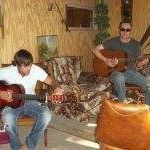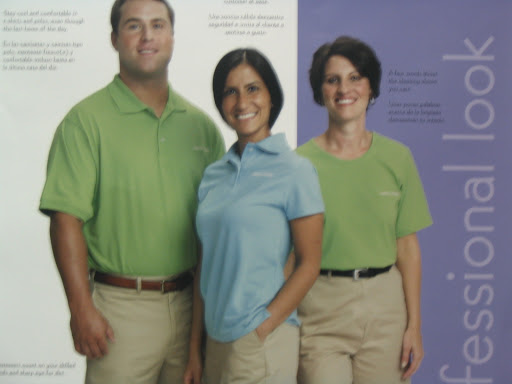Thomas J Bergin
age ~81
from Keene, NH
- Also known as:
-
- Thomas James Bergin
- Thomas C Bergin
- Thomas Bergin Ret
- Thos J Bergin
- Tom J Bergin
- Bergin Thomas
- Phone and address:
-
59 Maple Ave, Keene, NH 03431
6033520051
Thomas Bergin Phones & Addresses
- 59 Maple Ave, Keene, NH 03431 • 6033520051
- Leicester, MA
- Marlborough, NH
- Westmoreland, NH
Work
-
Company:Callaway golf ball operations, incDec 2008
-
Position:Senior engineer
Education
-
School / High School:University of Massachusetts, Isenberg School of ManagementJan 2008
-
Specialities:MBA
Isbn (Books And Publications)


The Game: The Harvard-Yale Football Rivalry, 1875-1983
view sourceAuthor
Thomas G. Bergin
ISBN #
0300032676






Resumes

Thomas Bergin
view sourceLocation:
United States

Thomas Bergin
view sourceLocation:
United States

Thomas Bergin Holyoke, MA
view sourceWork:
CALLAWAY GOLF BALL OPERATIONS, INC
Dec 2008 to 2000
Senior Engineer Tooling Department
Dec 2006 to Dec 2008
Senior Tooling Engineer Product Design Engineer
Feb 2004 to Dec 2006 CALLAWAY GOLF COMPANY
Carlsbad, CA
Oct 1997 to Feb 2004
Prototype Development Engineer THE RENOVATORS SUPPLY COMPANY
Millers Falls, MA
Sep 1995 to Oct 1996
Associate Manufacturing Engineer
Dec 2008 to 2000
Senior Engineer Tooling Department
Dec 2006 to Dec 2008
Senior Tooling Engineer Product Design Engineer
Feb 2004 to Dec 2006 CALLAWAY GOLF COMPANY
Carlsbad, CA
Oct 1997 to Feb 2004
Prototype Development Engineer THE RENOVATORS SUPPLY COMPANY
Millers Falls, MA
Sep 1995 to Oct 1996
Associate Manufacturing Engineer
Education:
University of Massachusetts, Isenberg School of Management
Jan 2008 to Jan 2011
MBA University of Vermont
1995
Bachelor of Science in Mechanical Engineering
Jan 2008 to Jan 2011
MBA University of Vermont
1995
Bachelor of Science in Mechanical Engineering
Name / Title
Company / Classification
Phones & Addresses
Principal
CONTEMPORARY BUSINESS CONCEPTS, INC
Business Services
Business Services
59 Maple Ave #68, Keene, NH 03431
59 Maple Ave 68, Keene, NH 03431
59 Maple Ave 68, Keene, NH 03431
Us Patents
-
Aerodynamic Surface Geometry For A Golf Ball
view source -
US Patent:7198578, Apr 3, 2007
-
Filed:Mar 13, 2006
-
Appl. No.:11/276750
-
Inventors:Vincent J. Simonds - Brimfield MA, US
Thomas F. Bergin - Holyoke MA, US -
Assignee:Callaway Golf Company - Carlsbad CA
-
International Classification:A63B 37/06
-
US Classification:473378
-
Abstract:A golf ball () approaching zero land area is disclosed herein. The golf ball () has an innersphere with a plurality of primary lattice members () and a plurality of sub-lattice members (). Each of the plurality of primary lattice members () has an apex and the golf ball () of the present invention conforms with the 1. 68 inches requirement for USGA-approved golf balls. The interconnected primary lattice members () and plurality of sub-lattice members () preferably form a plurality of dual polygons, preferably dual hexagons and dual pentagons.
-
Aerodynamic Pattern For A Golf Ball
view source -
US Patent:7250011, Jul 31, 2007
-
Filed:Mar 14, 2006
-
Appl. No.:11/276786
-
Inventors:Vincent J. Simonds - Brimfield MA, US
Thomas F. Bergin - Holyoke MA, US
Thomas A. Veilleux - Charlton MA, US -
Assignee:Callaway Golf Company - Carlsbad CA
-
International Classification:A63B 37/12
-
US Classification:473383
-
Abstract:A golf ball having traditional dimples and a tubular lattice structure is disclosed herein. The golf ball has dimples and a plurality of lattice members that form multi-faceted polygons. Each of the plurality of lattice members has an apex and the golf ball of the present invention conforms with the 1. 68 inches requirement for USGA-approved golf balls. The interconnected lattice members form a plurality of polygons, preferably hexagons and pentagons. Each of the lattice members preferably has a continuous contour.
-
Dual Dimple Surface Geometry For A Golf Ball
view source -
US Patent:7250012, Jul 31, 2007
-
Filed:Oct 30, 2006
-
Appl. No.:11/554184
-
Inventors:Vincent J. Simonds - Brimfield MA, US
Thomas F. Bergin - Holyoke MA, US
Thomas A. Veilleux - Charlton MA, US
Erich Muhlanger - Rocky Hill CT, US -
Assignee:Callaway Golf Company - Carlsbad CA
-
International Classification:A63B 37/12
-
US Classification:473383
-
Abstract:A golf ball () having a plurality of primary dimples () with annular tubular portion () is disclosed herein. In a preferred embodiment, there are 332 primary dimples which cover a surface area ranging from 81% to 87% of the golf ball (). Also in a preferred embodiment, there are twenty different types of primary dimples (), which vary in diameter, chord depth and/or entry angle.
-
Aerodynamic Surface Geometry For A Golf Ball
view source -
US Patent:7338392, Mar 4, 2008
-
Filed:Apr 2, 2007
-
Appl. No.:11/695534
-
Inventors:Vincent J. Simonds - Brimfield MA, US
Thomas J. Bergin - Holyoke MA, US -
Assignee:Callaway Golf Company - Carlsbad CA
-
International Classification:A63B 37/06
-
US Classification:473378
-
Abstract:A golf ball () approaching zero land area is disclosed herein. The golf ball () has an innersphere with a plurality of primary lattice members () and a plurality of sub-lattice members (). Each of the plurality of primary lattice members () has an apex and the golf ball () of the present invention conforms with the 1. 68 inches requirement for USGA-approved golf balls. The interconnected primary lattice members () and plurality of sub-lattice members () preferably form a plurality of dual polygons, preferably dual hexagons and dual pentagons.
-
Aerodynamic Surface Geometry For A Golf Ball
view source -
US Patent:7416497, Aug 26, 2008
-
Filed:Oct 31, 2007
-
Appl. No.:11/932556
-
Inventors:Vincent J. Simonds - Brimfield MA, US
Thomas J. Bergin - Holyoke MA, US -
Assignee:Callaway Golf Company - Carlsbad CA
-
International Classification:A63B 37/12
-
US Classification:473383
-
Abstract:A golf ball () approaching zero land area is disclosed herein. The golf ball () has an innersphere with a plurality of primary lattice members () and a plurality of sub-lattice members (). Each of the plurality of primary lattice members () has an apex and the golf ball () of the present invention conforms with the 1. 68 inches requirement for USGA-approved golf balls. The interconnected primary lattice members () and plurality of sub-lattice members () preferably form a plurality of dual polygons, preferably dual hexagons and dual pentagons.
-
Low Volume Cover For A Golf Ball
view source -
US Patent:7419443, Sep 2, 2008
-
Filed:Oct 29, 2007
-
Appl. No.:11/926629
-
Inventors:Vincent J. Simonds - Brimfield MA, US
Thomas A. Veilleux - Charlton MA, US
Thomas F. Bergin - Holyoke MA, US -
Assignee:Callaway Golf Company - Carlsbad CA
-
International Classification:A63B 37/12
-
US Classification:473383
-
Abstract:A golf ball () having a low volume cover layer () is disclosed herein. The golf ball () has a cover layer () with a volume less than 0. 1550 cubic inches. In a preferred embodiment, the cover layer () is composed of a reaction-injection molded polyurethane material. Preferably, the cover layer () has a plurality of deep depressions () with either a plurality of multi-faceted polygons () or dimples.
-
Dual Dimple Surface Geometry For A Golf Ball
view source -
US Patent:7468007, Dec 23, 2008
-
Filed:Jul 30, 2007
-
Appl. No.:11/830058
-
Inventors:Vincent J. Simonds - Brimfield MA, US
Thomas F. Bergin - Holyoke MA, US
Thomas A. Veilleux - Charlton MA, US
Erich Muhlanger - Rocky Hill MA, US -
Assignee:Callaway Golf Company - Carlsbad CA
-
International Classification:A63B 37/12
-
US Classification:473383
-
Abstract:A golf ball () having a plurality of primary dimples () with annular tubular portion () is disclosed herein. In a preferred embodiment, there are 332 primary dimples which cover a surface area ranging from 81% to 87% of the golf ball (). Also in a preferred embodiment, there are twenty different types of primary dimples (), which vary in diameter, chord depth and/or entry angle.
-
Aerodynamic Pattern For A Golf Ball
view source -
US Patent:7547259, Jun 16, 2009
-
Filed:Jul 30, 2007
-
Appl. No.:11/830113
-
Inventors:Vincent J. Simonds - Brimfield MA, US
Thomas F. Bergin - Holyoke MA, US
Thomas A. Veilleux - Charlton MA, US -
Assignee:Callaway Golf Company - Carlsbad CA
-
International Classification:A63B 37/12
-
US Classification:473383
-
Abstract:A golf ball having traditional dimples and a tubular lattice structure is disclosed herein. The golf ball has dimples and a plurality of lattice members that form multi-faceted polygons. Each of the plurality of lattice members has an apex and the golf ball of the present invention conforms with the 1. 68 inches requirement for USGA-approved golf balls. The interconnected lattice members form a plurality of polygons, preferably hexagons and pentagons. Each of the lattice members preferably has a continuous contour.
License Records
Thomas P Bergin
License #:
E-6928 - Expired
Category:
Engineering Intern

Thomas Bergin
view source
Thomas Bergin
view source
Thomas Bergin
view source
Thomas Bergin
view source
Bryan Thomas Bergin
view source
Thomas Bergin
view source
Thomas Bergin
view source
Thomas Bergin
view sourceMyspace
Googleplus

Thomas Bergin
Work:
VCAM Studio - Junior Script Writer
Education:
Macquarie University - Bachelor of Arts Media

Thomas Bergin
Education:
Prépa mmpp

Thomas Bergin

Thomas Bergin
Flickr
Youtube
Classmates

Thomas Bergin
view sourceSchools:
Northeast High School Lauderdale MS 1990-1994
Community:
Levon Tyler, Ethel Webb

Thomas Bergin (Brinkmann)
view sourceSchools:
Northeast High School Lauderdale MS 1996-2000
Community:
Levon Tyler, Ethel Webb

Thomas Bergin
view sourceSchools:
Townville High School Townville PA 1983-1987
Community:
Richard Powers, Robin Bonn, Jennifer Dempsey

Thomas Bergin
view sourceSchools:
Shawnee Mission South High School Overland Park KS 1977-1981
Community:
Lane Hatcher
Get Report for Thomas J Bergin from Keene, NH, age ~81














